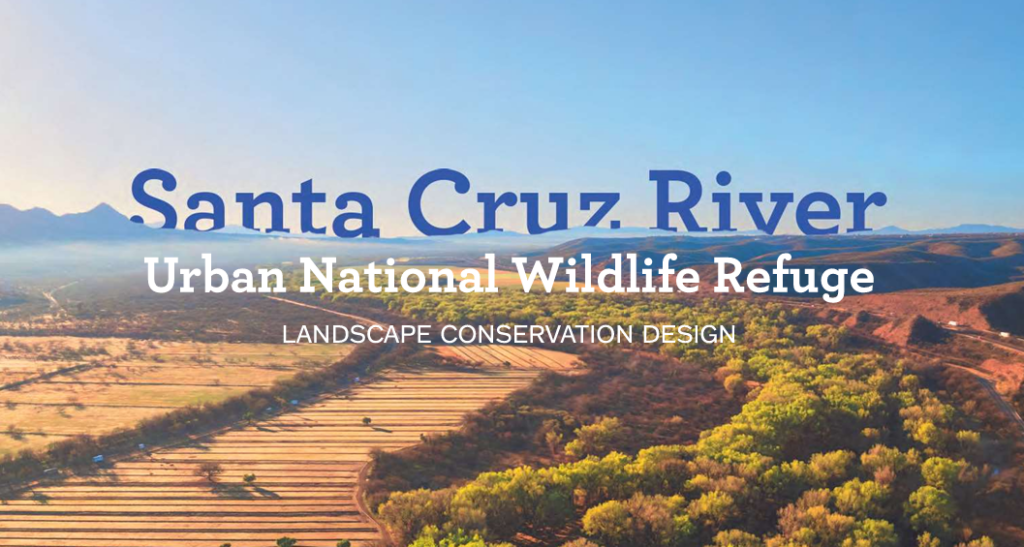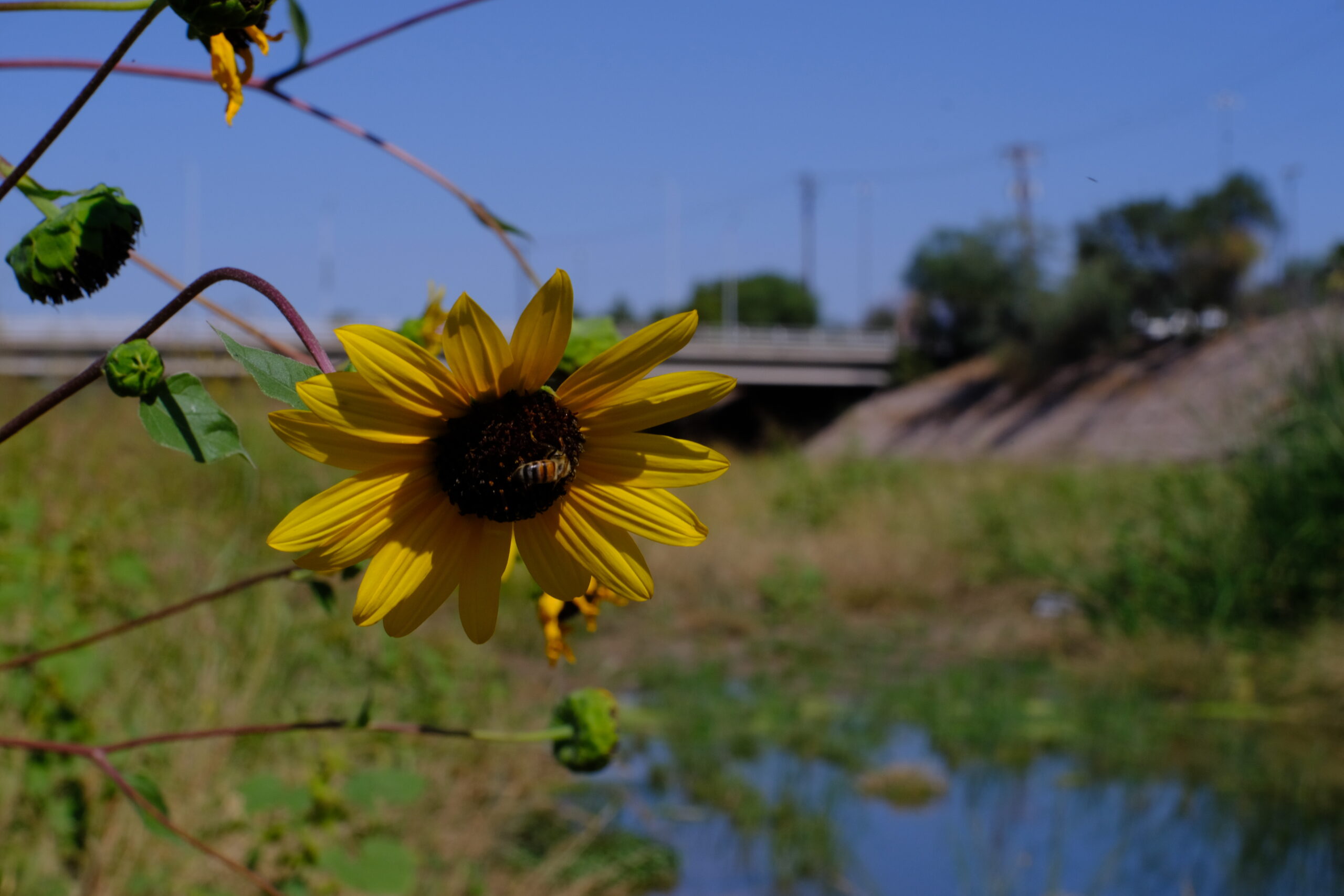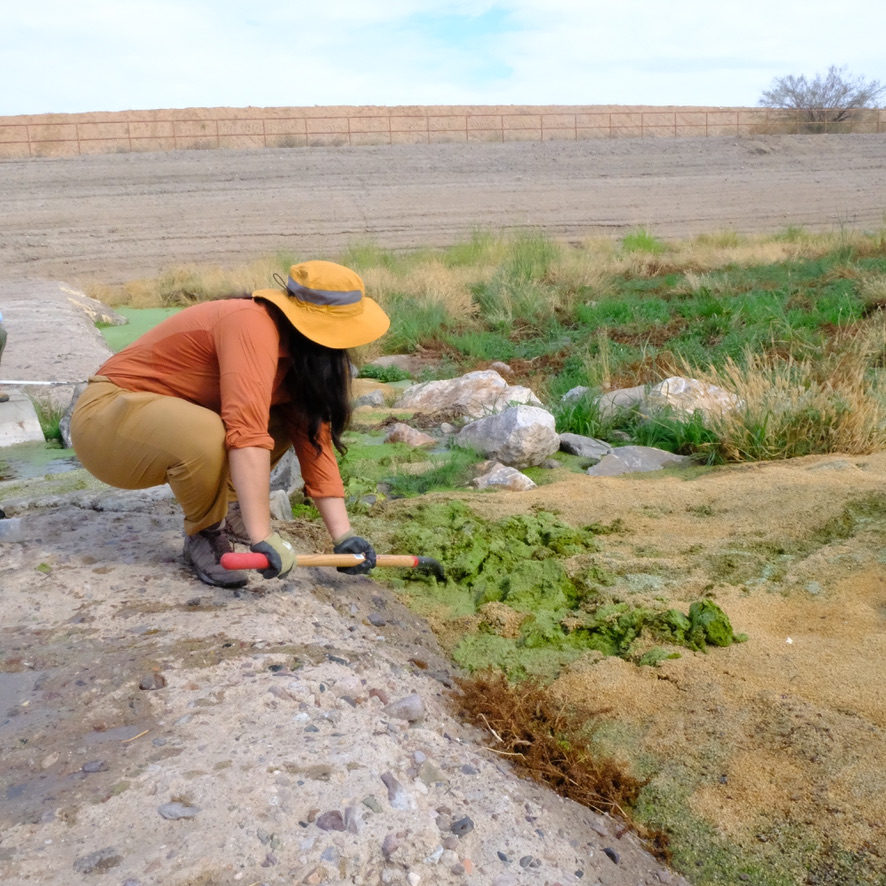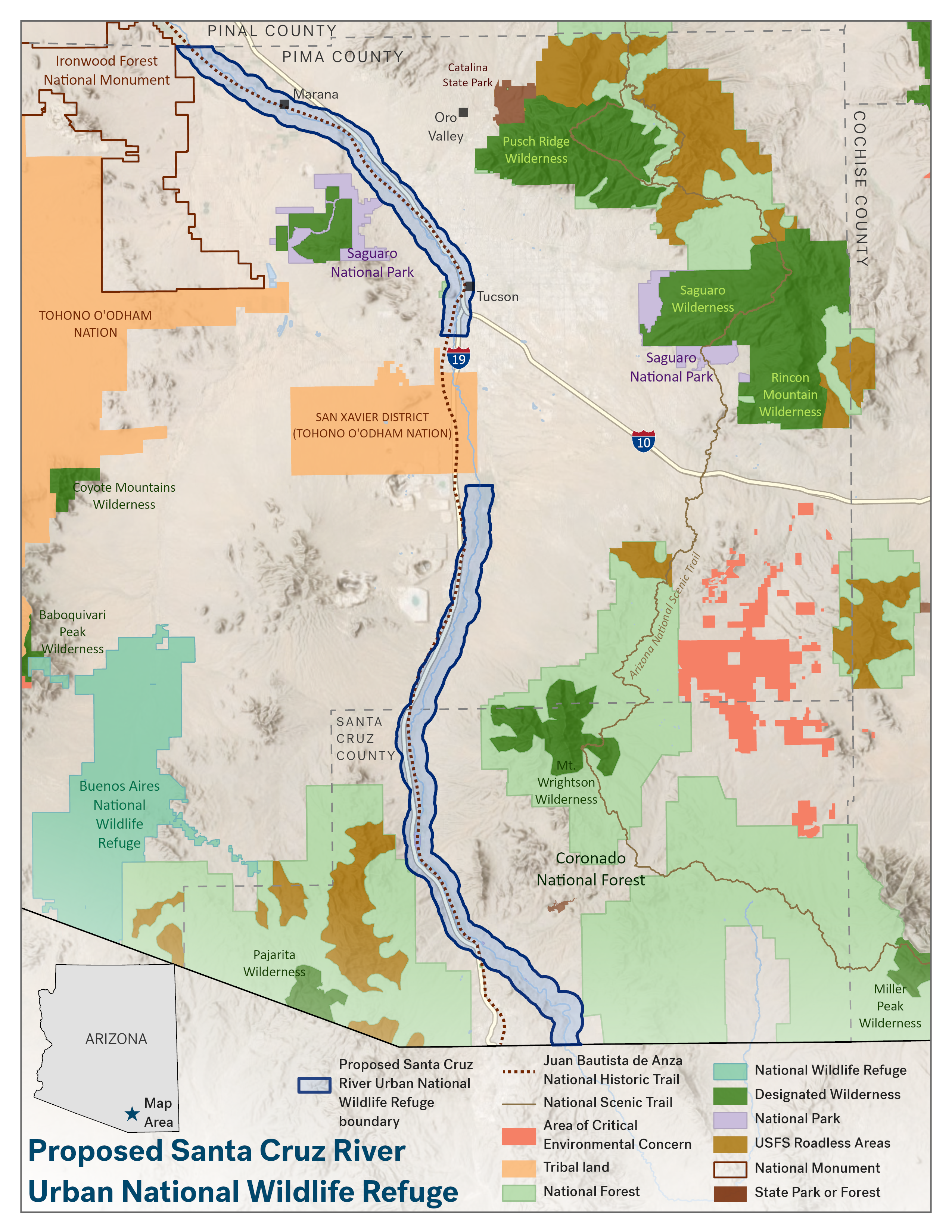Our Vision
The 2024 Landscape Conservation Design (LCD) report is a crowd-sourced document built by the Santa Cruz River Refuge coalition. It draws on key reports, essays, photos, poems, research and more to sketch a bi-county vision for this refuge. The vision and research presented in this report are the result of decades of work. In the last two years alone, the refuge coalition has formed through dozens of one-on-one interviews, in-person workshops, visioning sessions, surveys, petitions, newsletters and more.

Benefits of an urban national wildlife refuge
An urban national wildlife refuge designation protects crucial green space, improves and maintains wildlife habitat connectivity, ensures equitable access to the river and surrounding landscape for local communities, and honors the rich cultural and historical connections to the revitalized river. An urban wildlife refuge can protect threatened open space in perpetuity.
Urban refuges also improve equitable access to the outdoors for local residents by protecting green spaces that support community health and well-being and foster land stewardship through restoration, recreation and education.

A revitalized Santa Cruz River
In 2012, Pima County approved a tax allocation to build one and upgrade another wastewater treatment plant in Tucson and Pima County. These upgrades included technologies to remove nitrogen compounds that had been shown to be detrimental to the fish and wildlife along the Santa Cruz River.
Today, the improved plants release highly treated wastewater into the Santa Cruz, creating over 25 miles of vibrant habitat that has been foundational to the recovery of vegetation, wildlife, insects, and migratory bird species. The riparian corridor, located within walking distance of downtown Tucson, serves as essential outdoor access for tens of thousands of residents.
A sustainable future for people, wildlife, and water, informed by community
The ecologically and culturally vibrant Santa Cruz River flows through the heart of Tucson. The proposed refuge boundary would run through both Santa Cruz and Pima Counties. It would include multiple properties to maximize outdoor access and enable holistic habitat protection. The refuge would include several access points along the river that parallels downtown Tucson.
Almost 100,000 people (83% percent of whom are people of color) live along the Santa Cruz River in the City’s Ward 1, the core of the proposed refuge. The region encompasses rich Latinx, Chicanx, Mexican, Native, and Black neighborhoods, along with a diverse array of family-owned legacy businesses.
The beloved 137-mile Chuck Huckelberry Loop, a popular paved recreation trail that runs alongside the Santa Cruz River and its major tributaries, would be a centerpiece of the new refuge. At Sweetwater Wetlands, near the northern boundary of the proposal, birders have observed over 300 species, making the zone a regional birding hotspot. The proposed refuge corridor offers rich opportunities for birdwatching, cycling, walking and more.
In addition, the urban refuge would protect a vital migration corridor and north–south flyway for hundreds of species of birds and other wildlife. It is one of only two such migration corridors in southern Arizona.



